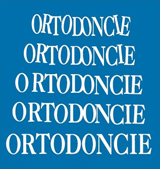
 Česká verze Česká verze
|
|
| Main Page | |
| Welcome message | |
| Overview | |
| Schedule | |
| Honorary Lecture | |
| Pre-Congress Course | |
| Keynote Lectures | |
| Registration | |
| Accommodation | |
| Information for authors | |
| Forms and documents | |
| Contacts | |
| Archives | |
|
|
|

The Congress is organised by the Czech Orthodontic Society. |
|
|
|
|
Prof. Alberto Caprioglio, D.D.S. 
3D perio-guidelines for palatal displaced cuspids: from planning to long-term.
Keynote Lecture - Friday, October 5, 2018
One of the most important aspects to take into consideration when evaluating the outcome of treatment of impacted maxillary canines is the final periodontal health. The lecture will overview the last 2 decades of the international literature and the long term results. In the past millennium the 2 stage treatment system was proposed and the present lecture would show the long term periodontal response of palatally impacted maxillary canines treated with this system in contrast with the one stage results. The periodontal health of the impacted canines after treatment was compared with contralateral spontaneously erupted canine in a split mouth study and the results will be showed. The periodontal conditions of the adjacent teeth were also considered. Moreover 3D considerations, with the use of CBCT, will be included. The used of surgical periodontal templates will be illustrated. Different type of incisions will be applied and periodontal guide lines will be drawn.
TIPS 4 TADS
Keynote Lecture - Saturday, October 6, 2018
Correction of Class II malocclusion is one of the most common problem in orthodontics and regard approximately one third of the treated patients. Whereas in case of mandibular retrusion is preferred to use appliances that can stimulate mandibular growth, in case of dento-alveolar protrusion or minus skeletal discrepancies the choice is often directed to distalization devices. Conventional headgear has been successful in correcting Class II malocclusion, either by restraining forward growth of the maxilla or by distalizing maxillary molars. In patients with inadequate cooperation reaching Class I occlusion by using it is difficult and this is the reason why clinicians often prefer intraoral distalizing appliances that minimize the need for patient compliance. The technologic progress in orthodontics, associated to the improved knowledge of the biomechanics principles, allowed to conceive and plan a new class of orthodontic devices, no compliance and characterized by a high control of teeth movement. The lecture will cover several aspects of low compliance technique for the management of Class II molar relationship. Besides a literature overview, anatomical aspects as well bio-mechanical ones will be discuss. Several clinical cases will be presented and different strategies will be discussed.
Back to the Keynote lectures list
| General partner |

|
|
|
Main partners |

|

|

|

|
|
|
Partners |

|

|

|
|
|
| Media partners |

|

|

|
|
|
| Partner of the party of the orthodontic assistants and dental technicians |

|
|
|
| Mobility Partner |

|
